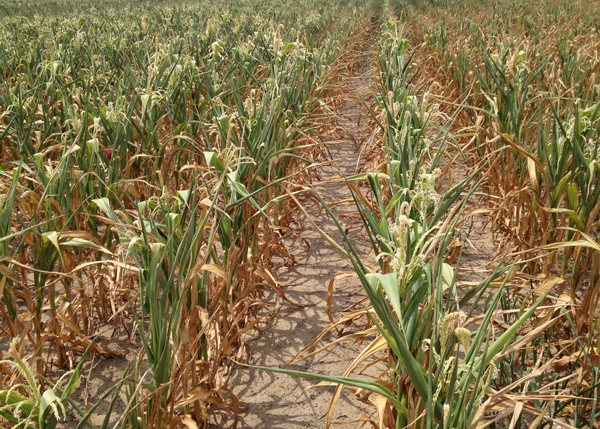Making Sense of Heat Stress, Climate Change and Plant Health
When the rain quits falling but the mercury keeps rising, dry conditions are just part of the equation when it comes to drought damage. Heat stress is also a threat.
While there are ways to make your soils and crops more resilient, no matter what Mother Nature throws at you, let’s start by understanding some basic biology first.
Heat stress occurs when the air temperature is hot enough for a sufficient period to cause irreversible damage to the plant’s function or development. At 95°F, photosynthesis drops drastically while plants increase their respiration to resist the heat. Think only daytime temperatures have an effect? Not so. When nighttime temperatures are high, plants don’t have time to recover from the daytime heat.
Plants respire at night. During respiration, plants break down sugars produced during photosynthesis, plus the plants release oxygen. This oxygen is used later to create glucose, which becomes an energy source for the plant. If plants can’t break down the glucose, however, they can suffer tissue damage. This occurs because the plant can’t remove waste efficiently.
Also, if respiration goes too fast, due to high nighttime temperatures, plants will lose precious water that becomes essential during a drought.
But what about climate change?
With all this talk of drought and heat stress, you may be wondering, “What if we’re really experiencing climate change?”
Annelisa Brown, a degreed meteorologist with the ProfitProAG team, looked at temperature data from three locations in the Upper Midwest with different populations (St. Cloud, MN, Minneapolis, MN and Algona, IA) to determine if summers and winters are becoming warmer. She used data from the National Centers for Environmental Information (NCEI) by collecting the maximum and minimum temperatures.
As part of her research, Brown also studied heat waves. A summer heat wave is defined as a span of two or more days when the daily high temperature was 90°F or above. A winter heat wave is a span of two or more days when the daily high temperature is 32°F or above. While Brown expected to see an increase in the number of heat waves during the summer and winter, her research suggested this is not the case most of the time, at least with the places she studied.
Now what?
If climate change isn’t the culprit, but natural cycles indicate an impending drought on the horizon in some areas, are you just at the mercy of Mother Nature? No.
You can take steps to drought-proof your soil and protect your crops. Learn more in the blog “Weatherproofing Your Crops in 2021” here on our website. We welcome your questions and look forward to working with you this year.

Drought-stressed corn
Interested in more of Annelisa’s work? Email her at adminassistant@profitproag.com for more information.
